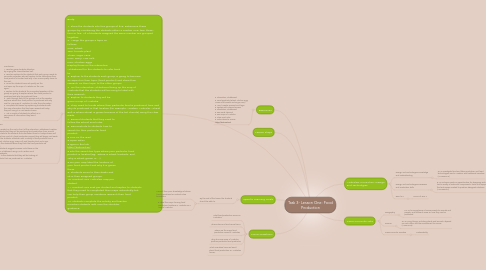
1. Body: 1. Place the students into five groups of five. Determine these groups by numbering the students either a number one, two, three, four or five. All of students assigned the same number are grouped together. 2. Assign the groups a topic as follows One- wheat Two- tomato plant Three- sugar cane Four- Dairy- cow milk Five- Chicken-eggs Display these on the Interactive Whiteboard for the students to refer back to. 3. Explain to the students each group is going to become an expert on their topic (food product) and share their research on their topic to the other groups. 4. On the Interactive Whiteboard bring up the map of Australia that the students will be using to label with their research. 5. Explain to students they will be given a map of Australia. 6. They need to locate where their particular food is produced, how and why its produced in that location (for example- Western Australia- Wheat Belt is where wheat is grown because of the hot climate) using the class iPads 7. Remind students that they need to follow the school iPad rules. 8. Demonstrate to students how to search for their particular food product • Turn on the iPad • Open safari • Type in the link http://kids.net.au/ • Into the search bar type where your particular food product is located (eg: ‘where is wheat located?’ and ‘why is wheat grown in…’) • On your map label the location of your food product and why it is grown there. 9. Students move to their desks and sit in their assigned groups. 10. Handout one Australian map per student 11. Handout one iPad per student and explain to students that they need to completed their maps individually but can help their group members research their food product. 12. Students complete the activity and teacher monitors students with over the shoulder guidance.
1.1. Conclusion: 1. Teacher gains students attention by ringing the class attention bell. 2. Teacher explains to the students that each group needs to nominate a speaker who will explain to the class where their food product is located and why. Then move quietly down to the mat. 3. Once the students have sat quietly on the mat open up the map of Australia on the IWB again. 4. Explain to the students the nominated speakers of the group are going to explain where their food product is produced and why it’s produced there. 5. Work through each of the groups and as the speaker explains where their food product is produced and why use the IWB map of Australian to note this information 6. Complete the lesson by explaining to students with the new information that has been researched today they will using it in next week’s lesson. 7. Ask a couple of students to reflect on a new piece of information they learnt today.
1.2. Introduction: 1. Class is seated on the mat in front of the Interactive Whiteboard. Explain to the students that they will be exploring food production from around Australia. State to the students the information learnt in today’s lesson will be used to form part of a food production project they will begin next week. 2. Attract the students’ attention with a variety of food products from a farm (wheat, chicken egg, cow’s milk and tomato plant and sugar cane). Ask the students where they think the food products are produced. 3. As the students suggest answers note these on the Interactive Whiteboard using Mind Meister mind mapping website. 4. Explain to the students that they will be looking at food products that are produced on Australian farms.
2. Specific Learning Goals
2.1. By the end of the lesson the students should be able to
2.1.1. • Recall their prior knowledge of where food is produced on a whole class brainstorm
2.1.2. • Label the major farming food production locations in Australia on a map of Australia
3. Focus Questions
3.1. What food production occurs in Australia?
3.2. Where does our food come from?
3.3. Where are the major food production areas of Australia?
3.4. Why do some areas of Australia produce particular food products?
3.5. What new ideas have we learnt about food production on Australian farms?
4. Resources
4.1. • Interactive Whiteboard • Food products (wheat, chicken egg, cow’s milk tomato and sugar cane) • Mind Meister account and login • Laptop with internet access • Interactive Whiteboard • 25x iPads class set • 25x maps of Australia • Class iPad rules • Instructions to access http://kids.net.au/
5. Lesson Steps
6. Australian Curriculum: Design and Technolgies
6.1. Design and Technologies Knowledge and Understanding
6.1.1. • 4.3 Investigate food and fibre production and food technologies used in modern and traditional societies (ACTDEK012)
6.2. Design and Technologies Processes and Production Skills
6.2.1. • 4.5 Critique needs or opportunities for designing and explore and test a variety of materials, components, tools and equipment and the techniques needed to produce designed solutions (ACTDEP014)
6.3. Band 3-4
6.3.1. Focus of Year 4
7. Cross Curricula Links
7.1. Geography
7.1.1. • 4.2 The importance of environments to animals and people, and different views on how they can be protected
7.2. Science
7.2.1. • 4.2 Living things, including plants and animals, depend on each other and the environment to survive (ACSSU073)
7.3. Cross Curricula Priorities
7.3.1. Sustainability
